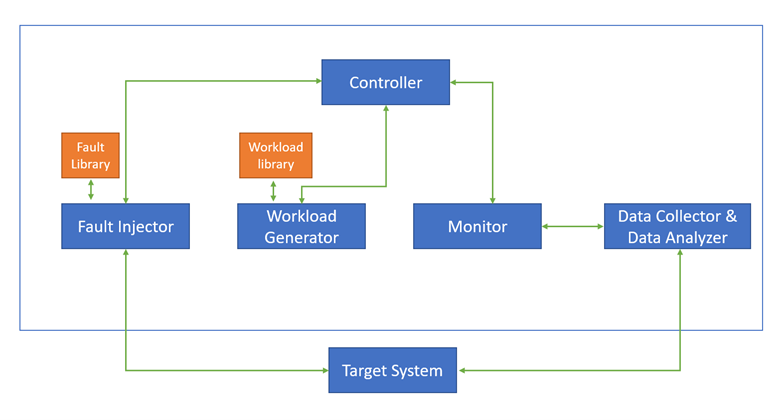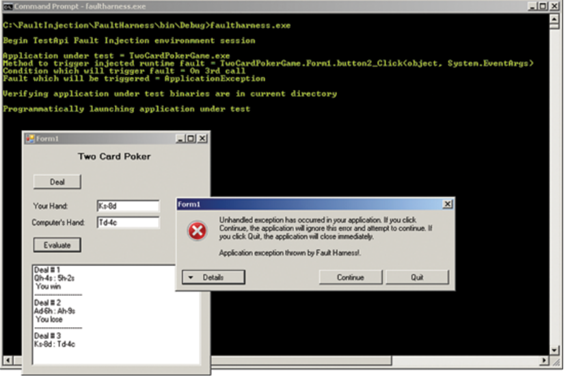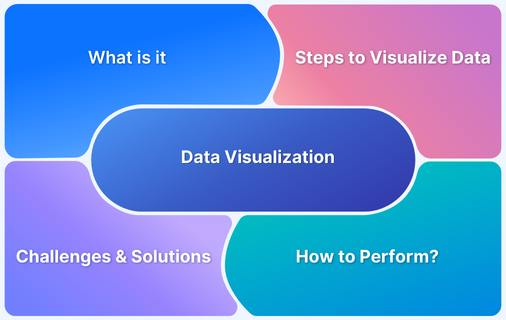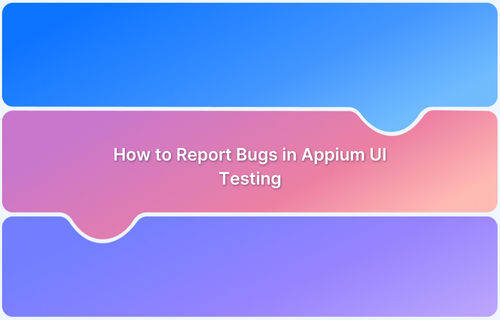Fault injection testing is a proactive approach to uncover how systems behave under unexpected failures.
Overview
What is Fault Injection Testing?
Fault injection testing involves deliberately introducing errors or faults into a system to evaluate its resilience, error handling, and overall robustness.
Importance of Fault Injection Testing
This technique helps identify hidden vulnerabilities before they impact users. It’s essential for building fault-tolerant systems, especially in complex, distributed environments.
How to perform fault injection testing:
- Identify critical components and failure points.
- Define fault types (e.g., latency, exceptions, data corruption).
- Set up a controlled test environment or use fault injection tools.
- Inject faults during various execution stages (compile-time, run-time).
- Monitor system behavior, log responses, and analyze recovery mechanisms.
This guide explores the fundamentals of fault injection testing, its types, tools, process, and best practices to help teams build more resilient and reliable systems.
What is Fault Injection Testing?
Fault injection testing is a software testing technique where intentional faults are introduced into a system to evaluate its behavior under failure conditions.
The goal is to assess the system’s robustness, reliability, and resilience when unexpected issues occur.
Key Aspects of Fault Injection Testing:
- Deliberate Error Simulation: Introduces errors such as network latency, corrupted memory, or service unavailability to observe system responses.
- Resilience Validation: Helps ensure the system can recover or fail gracefully under stress or failure scenarios.
- Proactive Risk Detection: Uncovers potential vulnerabilities and failure points before they occur in production.
- Supports Chaos Engineering: Often used within chaos testing practices to improve fault tolerance in distributed systems.
- Applicable Across Environments: Can be performed during development, testing, or even in controlled production-like environments.
Learn More: What is Reliability Software Testing
Importance of Fault Injection Testing
Fault injection testing is crucial for validating how systems behave under failure conditions and ensuring they can recover without user disruption.
- Improves System Resilience: Validates how well a system can handle unexpected failures and recover gracefully.
- Uncovers Hidden Bugs: Helps detect rare or edge-case issues that may not surface during normal testing.
- Ensures High Availability: Confirms system uptime and reliability, especially in mission-critical or user-facing applications.
- Supports Disaster Recovery Planning: Prepares systems for real-world disruptions by testing failover mechanisms.
- Enhances User Trust: Ensures consistent user experience even when components fail.
- Aligns with Modern Practices: Essential for testing microservices, cloud-native apps, and distributed systems under real-world fault conditions.
Also Read: How to find Bugs in Software?
Software Fault Injection Types
Software fault injection can be applied in various ways to simulate real-world failures and validate a system’s resilience.
- Compile-Time Fault Injection: Introduces errors by modifying the source code during compilation, such as inserting null pointer exceptions or deliberate memory leaks.
- Runtime Fault Injection: Injects faults during software execution without changing the source code—for example, simulating database connection drops or corrupted inputs.
- API/Interface-Level Fault Injection: Mimics failures in third-party services or internal APIs by simulating timeouts, failed responses, or invalid data returns.
- Network Fault Injection: Emulates network issues like latency, packet loss, or disconnections to test how systems behave under unreliable conditions.
- Resource Fault Injection: Simulates low-resource scenarios such as running out of memory, exceeding CPU usage, or disk space exhaustion.
- Logical Fault Injection: Alters the application’s decision paths by injecting unexpected values or conditions that disrupt business logic.
Fault Injection Testing Process
Fault injection testing follows a structured approach to simulate potential failure points and observe system behavior. It helps teams proactively identify vulnerabilities and validate fault tolerance mechanisms.
How to Perform Fault Injection Testing
Follow these steps to conduct fault injection testing effectively:
- Define Objectives: Identify the goal of the test—whether it’s to test system resilience, error handling, or failover performance.
- Select the Target System or Component: Choose the specific modules, services, or interfaces where faults will be injected.
- Choose the Type of Fault: Decide the kind of fault to inject—compile-time, runtime, network, resource-based, etc., based on the objectives.
- Set Up the Test Environment: Use staging or sandbox environments that mimic production conditions to prevent unintended disruptions.
- Use Fault Injection Tools: Leverage tools like Chaos Monkey, Gremlin, or custom scripts to inject the selected faults.
- Monitor System Behavior: Track real-time application responses, system logs, and error handling processes.
- Analyze Results: Assess how the system handled the fault. Identify performance bottlenecks, unhandled exceptions, or recovery failures.
- Improve and Iterate: Implement fixes or improvements based on findings and re-run tests to validate enhancements.
Fault Injection Environment
The Fault Injection environment typically consists of the following components.
- Workload Generator: Contains software workloads.
- Fault Injector: Injects faults into the target software while the commands are executed from the workload generator.
- Monitor: Monitors the execution of the commands and collects data as required.
- Data Collector: Performs online data collection.
- Data Analyzer: Performs data processing and analysis.
- Controller: Controls the experiment. The controller is a program that can run on the target software system or on a separate computer.
Key Fault Injection Techniques
Fault injection uses various techniques to simulate different faults, helping uncover system vulnerabilities. The main techniques include:
- Compile-Time Fault Injection: Introducing faults during the software compilation process, such as code mutation or inserting faulty instructions to test code robustness.
- Runtime Fault Injection: Injecting faults while the program is running, like memory corruption, exceptions, or invalid inputs to assess how the system handles unexpected errors.
- Network Fault Injection: Simulating network-related issues such as latency, packet loss, disconnections, or bandwidth limitations to test application behavior under adverse network conditions.
- Hardware Fault Injection: Inducing faults at the hardware level, like bit flips or power failures, to evaluate system resilience against physical failures.
- Resource Fault Injection: Creating faults related to limited system resources, such as CPU overload, low memory, or disk space exhaustion, to test system stability under resource constraints.
- Interface Fault Injection: Simulating errors in communication between components or services by sending malformed or delayed messages.
Each technique targets different failure points, enabling comprehensive system robustness and fault tolerance testing.
Compile-time Fault Injection Examples
This section lists some examples of how faults are injected during compile time by modifying the code. The code injected through this method results in errors similar to the errors that the programmers unintentionally commit.
Example: Code Modification
int main()
{
int a = 10;
while ( a > 0 )
{
cout << "GFG";
a = a - 1;
}
return 0;
}Modified Code:
int main()
{
int a = 10;
while ( a > 0 )
{
cout << "GFG";
a = a + 1; // '-' is changed to '+'
}
return 0;
}In the modified code, a fault is injected by modifying the code from “a=a-1” to “a=a+1”. The variable “a” value increases and never meets the while condition. Therefore, the while loop goes into an infinite loop and never ends.
Example: Code Insertion
The following example shows how a fault is injected during the compile time by inserting the code instead of modifying the code. In this case, an additional code is added to change the parameter’s value or value.
Original Code:
int main()
{
int a = 10;
while ( a > 0 )
{
cout << "GFG";
a = a - 1;
}
return 0;
}Modified Code:
int main()
{
int a = 10;
while ( a > 0 )
{
cout << "GFG";
a = a - 1;
a++; // Additional code
}
return 0;
}In this example, an additional line of code “a++” is added to change the value of the variable “a”.
Run-time Fault Injection Example
The following figure shows the exception triggered when a fault is injected on a dummy .NET WinForm application named TwoCardPokerGame.exe. A C# program that runs in the backend at run time alters the behavior of the software when you click the Evaluate button. In this situation, the Two Card Poker application cannot handle the exception and displays an error message.
Sample Fault Injection code:
using System;
namespace FaultHarness {
class Program {
static void Main(string[] args) {
try {
Console.WriteLine("\nBegin TestApi Fault Injection environmnent session\n");
// create fault session, launch application
Console.WriteLine("\nEnd TestApi Fault Injection environment session");
}
catch (Exception ex) {
Console.WriteLine("Fatal: " + ex.Message);
}
}
} // class Program
} // nsWhen to use Fault Injection in Software Testing?
Fault injection is best applied when system reliability and resilience are critical. Use it to:
- Validate error handling and recovery mechanisms under real-world failure conditions.
- Test systems with complex dependencies like microservices or distributed architectures.
- Identify weaknesses before production deployment to minimize downtime.
- Assess how software behaves during unexpected hardware or network faults.
- Ensure compliance with industry standards requiring fault tolerance validation.
Implement fault injection early in development and continuously through the software lifecycle for robust, failure-resistant systems.
Fault Injection tools
Fault injection tools help simulate faults automatically to test system robustness. Common categories include:
- Software Fault Injection Tools: Simulate software faults such as exceptions, delays, or resource failures. Examples: Chaos Monkey, Gremlin, Simian Army.
- Hardware Fault Injection Tools: Introduce faults at the hardware level, like bit flips or power interruptions. Examples: FIRED (Fault Injection for Reliable Embedded Devices), Cadence Palladium.
- Network Fault Injection Tools: Emulate network issues like latency, packet loss, and disconnections. Examples: NetEm, Toxiproxy, Chaos Mesh.
- Cloud-Native Tools: Designed for microservices and cloud environments to test resilience and fault tolerance. Examples: LitmusChaos, Pumba, Kube-monkey.
Fault Injecting Testing on Real Devices
Simulators and emulators often fail to replicate real-world conditions and hardware-specific issues, making fault injection testing on real devices crucial for uncovering hidden reliability risks.
BrowserStack Live solves this by providing a real device cloud with access to a wide range of real mobile and desktop devices. This enables fault scenario testing in actual hardware, network, and OS environments, with no physical setup required.
Why Real Device Testing Matters for Fault Injection:
- Reveals hardware-specific faults and network inconsistencies missed by emulators.
- Provides realistic insights into how faults impact battery, memory, and sensors by testing in real user conditions.
- Ensures maximum coverage across different device models and operating systems.
- Facilitates remote collaboration with live debugging and issue reproduction tools.
- Integrates seamlessly with CI/CD pipelines for continuous fault resilience testing.
Fault Injection Testing vs Chaos Engineering
Here are the key differences between fault injection testing and chaos engineering:
| Aspect | Fault Injection Testing | Chaos Engineering |
|---|---|---|
| Purpose | Introduce specific faults to test system resilience | Introduce random failures to observe system behavior under stress |
| Scope | Focused on targeted fault scenarios | Broader scope testing system-wide stability |
| Approach | Controlled, planned fault insertion | Experiment-driven, often unpredictable failures |
| Goal | Verify fault tolerance of individual components | Improve overall system robustness and recovery |
| Common Use Cases | Testing error handling, failover, recovery paths | Validating distributed systems and microservices under chaos |
| Execution | Usually done in development or staging environments | Typically conducted in production or production-like environments |
| Tools | Tools like Netflix FIT, Ganesha | Tools like Chaos Monkey, Gremlin |
| Outcome | Identifies weaknesses in specific failure scenarios | Strengthens system by exposing hidden vulnerabilities |
| Complexity | Relatively simpler, focused testing | More complex, requires monitoring and automation |
Advantages of Fault Injection in Software Testing
Fault injection testing offers several key benefits that enhance software quality and reliability:
- Identifies hidden system weaknesses before they cause failures
- Validates error handling and recovery mechanisms effectively
- Improves system reliability and robustness
- Enables proactive detection of potential downtime causes
- Helps build confidence in system resilience under adverse conditions
Learn More: What is Test Reliability in Software Testing
Limitations of Fault Injecting Testing
Despite its benefits, fault injection testing comes with certain challenges and constraints:
- Can be complex to design and implement accurately
- Risk of causing unintended system crashes if not carefully managed
- May require significant setup time and specialized tools
- Limited by the scope of injected faults; real-world failures can be unpredictable
- Not always feasible to run in production environments due to risk factors
Best Practices of Fault Injection Testing
Implementing fault injection testing effectively requires a strategic approach. Key best practices include:
- Define Clear Objectives: Establish specific goals for what faults to simulate and what outcomes to measure.
- Start in Controlled Environments: Begin testing in staging or test labs to avoid unintended impact on production systems.
- Automate Where Possible: Use automation tools to replicate fault scenarios and gather data efficiently and consistently.
- Monitor System Behavior Closely: Continuously track system responses to injected faults to identify weaknesses accurately.
- Gradually Increase Fault Complexity: Start with simple faults and test more complex failure scenarios progressively.
- Integrate with CI/CD Pipelines: Incorporate fault injection into continuous testing workflows for ongoing resilience validation.
- Document and Analyze Results Thoroughly: Keep detailed logs of fault tests to support debugging and future improvements.
- Plan for Recovery Testing: Ensure fault injection tests verify system recovery and failover mechanisms.
- Collaborate Across Teams: Involve developers, testers, and operations early to align on fault scenarios and mitigation strategies.
Conclusion
Fault injection testing is essential for building resilient software systems by proactively identifying and addressing potential failure points.
By simulating faults in controlled environments and leveraging best practices, teams can improve system reliability and user experience. Adopting fault injection as part of the testing strategy ensures robust, fault-tolerant applications ready for real-world challenges.








